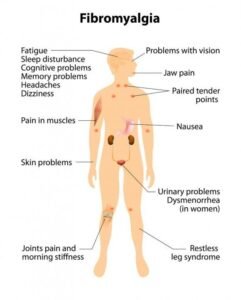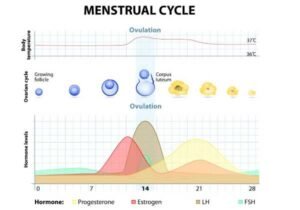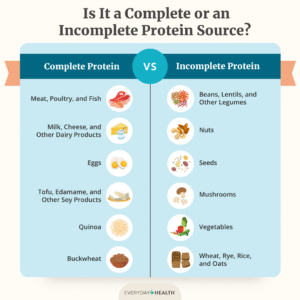Physical Therapy for Knee Pain
Understanding Physical Therapy for Knee Pain
Physical therapy is a powerful tool for alleviating knee pain, enhancing strength, and improving overall mobility. By addressing discomfort, it facilitates everyday activities like walking, standing from a seated position, or climbing stairs. Regular sessions, typically two to three times per week over several weeks, can significantly improve knee function.
Initial Assessment for Knee Pain
The journey to relief begins with a comprehensive evaluation by a physical therapist. During the first visit, the therapist assesses your knee condition to craft a tailored treatment plan. This plan often includes a combination of exercises, manual therapy, and advanced modalities like ultrasound to target pain and restore function.
Completing Intake Forms
At your initial appointment, you’ll fill out forms detailing your medical history and current symptoms. The therapist may ask about the onset of your pain, what triggers it, and any methods that provide relief. This information helps shape an effective treatment strategy.
Evaluating Pain Levels
To gauge your discomfort, you’ll rate your knee pain on a scale from 0 to 10:
-
0: No pain
-
1–3: Mild discomfort
-
4–6: Moderate pain
-
7–10: Severe pain
This pain scale not only guides the therapist’s approach but also plays a critical role in securing insurance approval, as most providers require evidence of mild to severe pain to justify treatment.
Analyzing Movement and Function
The therapist conducts several assessments to pinpoint the root cause of your knee pain, including:
-
Gait Analysis: Observing your walking pattern to detect subtle irregularities in knee movement.
-
Palpation: Gently examining the knee to identify tender areas or structural abnormalities.
-
Range of Motion Tests: Measuring how well your knee bends and straightens to guide therapy.
-
Strength Assessment: Evaluating muscle strength around the knee to identify weaknesses or imbalances.
-
Balance Evaluation: Checking for stability issues that may place undue stress on the knee.
-
Swelling Measurement: Assessing inflammation to tailor treatment.
-
Specialized Tests: Performing specific maneuvers to diagnose underlying issues.
Targeted Exercises for Knee Pain Relief
Exercise is the cornerstone of physical therapy for knee pain, designed to strengthen muscles, improve flexibility, and enhance joint stability. Your therapist may recommend:
-
Quad sets and straight leg raises to strengthen the thigh muscles.
-
Short arc quad exercises to boost knee stability.
-
Hip-strengthening routines to support proper knee alignment.
-
Lower extremity stretches to enhance flexibility.
-
Balance exercises to reduce strain on the knee.
Your therapist will provide guidance on performing these exercises at home and monitor your progress during follow-up sessions.
Advanced Treatment Modalities
In addition to exercises, physical therapists employ various techniques to accelerate recovery, such as:
-
Ultrasound Therapy: Using sound waves to promote tissue healing.
-
Electrical Stimulation: Reducing pain and improving muscle function.
-
Kinesiology Taping: Supporting the knee without restricting movement.
-
Heat or Ice Therapy: Managing inflammation and soothing discomfort.
-
Soft Tissue Massage: Relieving tension in surrounding muscles.
-
Joint Mobilization: Enhancing knee movement and reducing stiffness.
Navigating Insurance for Physical Therapy
Most insurance plans, including Medicare, cover physical therapy when deemed medically necessary. However, coverage may be limited to a specific number of visits or require prior authorization. To ensure approval:
-
Verify your plan’s requirements before scheduling.
-
Obtain a doctor’s prescription if needed.
-
Be prepared for an initial approval of only a few sessions, with additional visits contingent on further evaluations.
If your pain is rated as mild, coverage may be denied, so accurate reporting during the assessment is crucial.
When to Seek Medical Attention
While physical therapy is effective for many, certain symptoms indicate the need for immediate medical evaluation:
-
Inability to bend or straighten the knee fully.
-
Difficulty bearing weight on the affected leg.
-
Visible deformities or abnormal joint shape.
-
Knee instability, locking, or unusual sounds like clicking or grinding.
-
Persistent pain after three days of home care.
-
Accompanying symptoms like fever, swelling, numbness, or discoloration extending to the calf.
-
Severe pain even at rest or signs of infection (redness, warmth).
The Importance of Knee Health
The knee is a vital joint, supporting daily activities like walking, climbing stairs, and rising from chairs. Untreated pain can limit these functions, impacting your quality of life. Through consistent physical therapy, you can maintain mobility, strengthen the joint, and prevent future issues, ensuring long-term knee health.
💡 Frequently Asked Questions
Will Insurance plan Include Knee PT?
Answer coming soon. We are working on detailed responses to this common question.
PT Remedies for Knee Agony Course of action modalities utilized for knee actual physical treatment method involve:
* Ultrasound
* Electrical stimulation
* Kinesiology taping
* Software package of warm or ice
* Delicate tissue massages
* Knee joint mobilization
Are Physiotherapy and Actual physical Treatment method the Similar Issue?
Answer coming soon. We are working on detailed responses to this common question.
⭐ Expert Tips
- Include seasonal or trendy variations to keep your meals exciting.
- Highlight prep shortcuts or time-saving techniques for busy cooks.
- Consider dietary restrictions and include substitution suggestions.
✅ Key Takeaways
- These dinner ideas are perfect for impressing guests or enjoying special occasions.
- Choose recipes that match your skill level and available kitchen tools.
- Presentation and taste both contribute to a memorable dining experience.
📣 Join Our Community
Want more inspiration like this? Subscribe to our newsletter for weekly dinner ideas and cooking tips!






